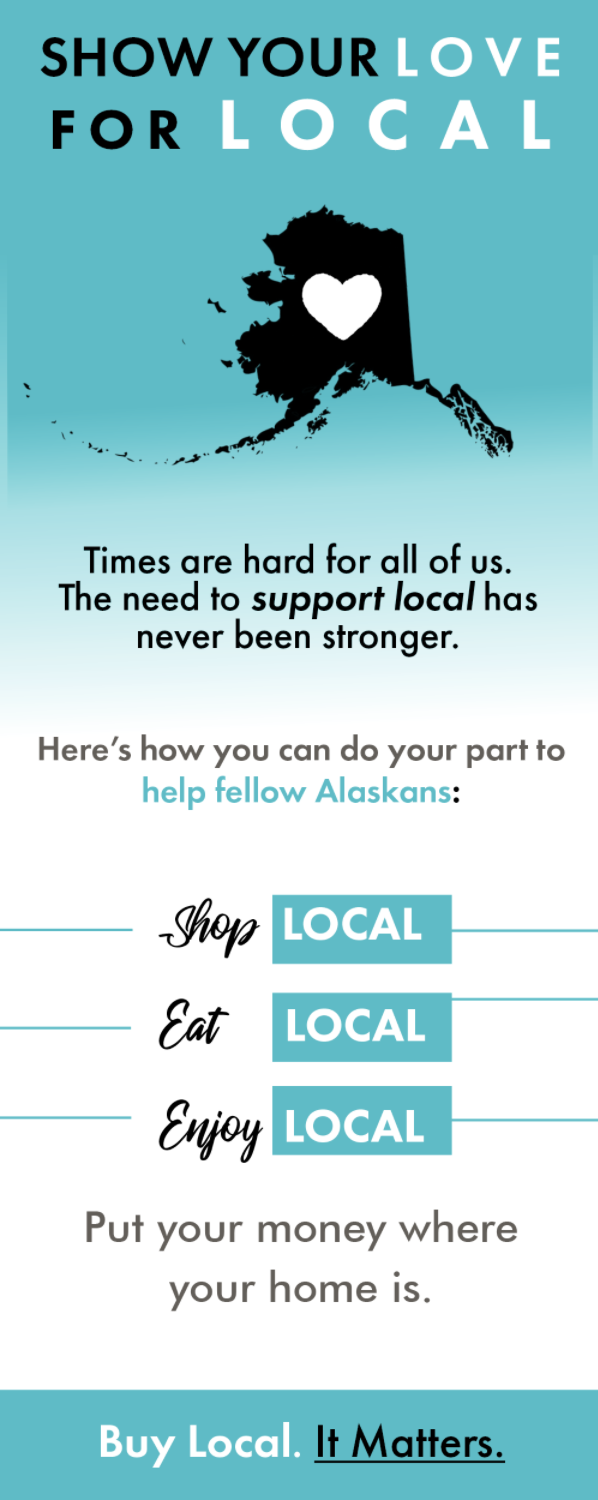
Homeschooling:
A Q&A with veteran homeschooler Meghan Wotring
Meghan Wotring, a 27-year resident of Alaska, living in Eagle River and running a small natural wellness business, has homeschooled her two daughters (currently in second and fourth grade) since 2016. Here, she shares some of her homeschooling experiences and tips to help other parents navigate this strange new world.
Q: Why did you start homeschooling?
I decided to try homeschooling because my husband asked me to. Funny story is, I was actually homeschooled all through grade school. I came out of that experience thinking I would never homeschool my children. My husband went to public school all through grade school and came out of that experience thinking he would never send his kids to public school.
When it came time to decide what to do for our oldest daughter, he told me that his wishes for our children is that they be homeschooled. But, since I would be doing the majority of the work, he understood if I didn’t want to, but asked that I seriously consider it.
When I did the research, everyone I talked to recommended Raven Homeschool. I scheduled an interview with them and realized that homeschooling today is a completely different game than when I was in grade school. Much to my surprise, it didn’t take long for me to fall in love with it, as it fits our family so perfectly.
Q: What do you like best about homeschooling?
Hands down it’s the flexibility. That is THE key word for everything homeschooling. Homeschooling allows for flexibility in every aspect of your life. Each family can build their own schedule. They can schedule time off when it fits their needs, purchase the curriculum that fits their child’s learning style and their teaching style. They can schedule their school days for any day of the week and schedule their schoolwork time for any time of the day. If your child needs more time on one subject and less time on another you have the option to make that happen, catering the education to each child’s individual needs.

One of my favorite things is that we choose to school year-round. This allows us to maintain a more relaxed daily schedule, and to take time off whenever we need and want throughout the year.
It also allows us to schedule what I call “travel school” trips in January and February every year. I have the idea that we will study U.S. History throughout the girls’ grade school years by visiting each individual state and studying it in person. We’ve already done this with Oregon, California, Oklahoma, Louisiana, North Carolina and South Carolina. We have hopes for another trip this winter, but we’ll have to wait and see how things go. There are so many options for how one can customize their homeschooling experience!
Q: How have you seen homeschooling change?
In Alaska, we are so lucky to have such freedom for how we choose to homeschool. You can choose to do so independently or choose to enroll with one of the many homeschool charters. With the charters comes a great deal of flexibility. Many allow dual enrollment, and they all offer some sort of allotment to help cover cost of curriculum and supplies. Some offer support via classes, clubs, and field trips, and they all provide Advisory Teachers who will help guide the parent with curriculum choices, questions, and help ensure your child is on track with their education.
Homeschooling has become more mainstream which has brought with it so many more opportunities for socialization, classes, and field trips, and more support overall. It’s no longer an obscure education option reserved for only the extremely passionate. It’s so customizable to each family and student. It is now, theoretically, possible for anyone with any background or lifestyle to homeschool.
.png)
Q: What have you learned during your homeschooling experience about being a better teacher and a better mom?
It’s so easy for us as parents, homeschooling or not, to have our plans and our ideas about how things should be and how the days should go. Homeschooling has challenged me on that and taught me to slow down, take stock of where my children are emotionally, and focus on those needs as well as their educational needs. I have learned and still am learning how to provide for the whole child.
Q: Due to COVID-19 and experiences with virtual learning, more parents are considering homeschooling this year. What would be your advice to new homeschoolers?
Embrace flexibility. Your schedule will look different, each child will respond differently, and that curriculum you spent hours researching might not work for your family. It may take some time to adjust to the new schedule and way of doing things. You may feel like you aren’t accomplishing near as much as you had scheduled out. But don’t give up. It will take some time to adjust and find your groove. Don’t be afraid to scrap everything you planned and try something else if it’s not working. Don’t be discouraged if it takes a few weeks or more to get into the routine. Don’t be afraid to reach out and ask for help and advice. Oftentimes we find that we scheduled too much! One of my biggest challenges: There are always so many good things and we want to do them all! How do you pick which good things to study and participate in? It’s usually trial and error. When that happens, I admit it, and make the very hard decision to back out of one or more of the things that we had signed up for.

Q: Do you have any advice for parents who are not homeschooling, but are trying to help their children with virtual learning at home during COVID?
I feel there may be a few universal guidelines for helping children with their education regardless of what form it is coming in. As parents, or at least for me, I often have a picture in my head of how the day is going to go. That doesn’t always align with where my children are at with their emotional, physical and spiritual needs. Take time to pause what we are doing, address the child’s non-academic needs, so we can regroup and return to the education work. Even still, there are just going to be days that are hard. Understanding that and being ready to face those hard days is just going to be part of it. I know that everyone is starting an education journey that is different this year, even us “veteran homeschoolers.” So, if we can all grant ourselves the grace and flexibility to experience the hard days and still stick with the very hard but rewarding work of education, I think we will all be okay. Maybe what we learn this year will be more important than just academics.
Q: How can parents better balance the responsibilities of being a parent and being a teacher?
When a parent also becomes the teacher, roles blend into one and it can become confusing for both parent and child. It can definitely be a challenge to take on both roles. I think this is one of the things many fear about homeschooling. Educating a child is a hard role. It can bring extra stress into the relationship, and that can be scary to face as a parent. Being a parent is hard enough, and to add the extra stress of educating your child can just seem silly and unnecessary.
It’s okay to take a break from being their teacher to be their parent in the middle of a math lesson. When you see your child struggling, pause the teacher role and turn on the parent role. It may feel weird and awkward at first, but the more you do it, you’ll find the two roles meld into one seamlessly.
Now my children see me as their “parent-teacher” all the time. They know they can depend on me emotionally while in the middle of their math lesson, and they can ask me educational questions at any time as well. They ask me questions they would ask a teacher all throughout every day, turning normal activities into educational opportunities. I believe this experience is helping turn our entire family into one that views education as a way of life, rather than something we just do during the day Monday through Friday.

As a stay-at-home homeschooling mom, one of my responsibilities is feeding my family. To fit this into a busy homeschool life you can turn it into school. Teach the kids how to meal plan, build a shopping list, go to the store and teach them how to pick produce, and shop for each item on the list. Back at home, teach them how to prepare and cook the planned meal. You can incorporate math, science, art, geography and/or history into cooking lessons.
There are other ways I incorporate my responsibilities and needs outside of being their teacher. I’ll actually do my workouts while they are doing school. I give spelling words while lifting weights or getting my time in on the elliptical. I have them work on their independent studies while I am doing laundry or cleaning or showering. It’s a practice of multi-tasking, creativity and flexibility. It may take a while to find what works for you, but it can be done.
Q: What resources would you suggest for parents?
Other parents and your advisory teacher and staff at your charter, if you are using one, are probably your most valuable resource. They will be able to direct you to the more specific needs to fit your situation. In addition to that, don’t underestimate the power of YouTube. It is one of our favorite resources for studying geography, history and science. Facebook is a great place to search for events and classes. And, of course, the library!









